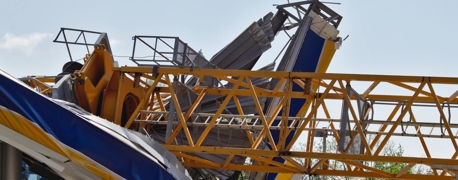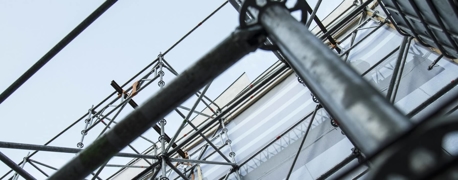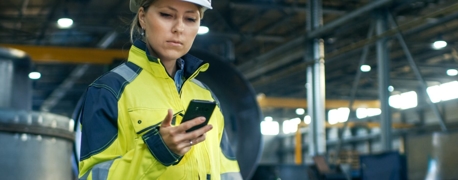Most Dangerous Construction Companies

Construction is among the most dangerous industries in the United States. Workers in the construction industry are at risk of all of OSHA’s Fatal Four, which, together, were responsible for approximately 58% of construction worker deaths in 2021.
Falls, the first and most deadly of the Fatal Four, accounted for more than 1 in 3 jobsite deaths in 2019. Still, the construction industry hasn’t made a change; the most common OSHA violation in the industry in both 2020 and 2021 was failure to provide necessary fall protection to workers.
But it’s not just dangers on the job that make construction deadly. According to a recent report published by the CDC, construction has the highest drug overdose mortality rate of all industries. In fact, the 162.6 deaths per 100,000 workers that the construction industry suffered was a far greater number than the food preparation industry, in second place at 117.9 per 100,000.
In 2022, OSHA conducted 31,820 inspections, 56% of which were unprogrammed, or brought on by employee complaints, injuries, fatalities, or referrals. In this blog, we will explore construction companies that have pushed their workers to the limit - and faced the consequences for their bad actions.
Hanover Company & Friends Masonry Construction
Of the 12 slots on the 2022 “Dirty Dozen” list compiled by the National Council for Occupational Safety and Health (National COSH), two companies associated with a deadly construction accident shared a spot. Hanover Company, the project owner, and Friends Masonry Construction, the sub-contractor, were listed for their part in the tragic deaths of three Latino construction workers after scaffolding collapsed on a Hanover project in Charlotte, North Carolina, causing them to fall approximately 70 feet.
Charm Builders
In October 2022, Charm Builders contested a $1,090,231 fine for several OSHA violations for fall protection failures. Based in Millersburg, Ohio, the roofing contractor has faced 12 citations since 2009 related to fall hazards.
Arrow Plumbing
Based in Blue Springs, Missouri, Arrow Plumbing has been cited several times for trench violations since 2018. A worker was killed in a 2016 trench cave-in incident, and, more recently, two of the company’s workers were found in an unprotected 7-foot-deep trench in 2021 “despite knowing firsthand how deadly a trench collapse can be,” according to OSHA’s acting regional administrator.
Allways Roofing Inc.
This Snohomish, Washington-based roofer faced five willful, one repeat, and one other-than-serious violation after an OSHA inspection in February 2022. They have amassed more than $3 million in safety violations over the past decade, including failures related to fall prevention, eye protection, safety plans, and safety training.
How Many OSHA Violations Are There?
OSHA assesses a workplace based on a wide variety of safety requirements, and may cite a company for one of six types of safety violations.
These include:
- De Minimus Violation: A technical violation of OSHA rules, this type does not directly impact the health and safety of a company’s workers and is therefore the most minor infraction.
- Other-Than-Serious Violation: A violation of this sort may put a worker in danger, although it may not lead to serious injury or death.
- Repeated Violation: This citation is given when a company does not correct a previous violation or commits something similar to what they’ve already been cited for.
- Failure to Abate Prior Violation: In this instance, a business is given a date by which to correct the infraction, and faces daily fines should they fail to address it in time.
- Serious Violation: OSHA issues this citation when a business does nothing to amend a workplace hazard that they know could seriously injure or even kill a worker.
- Willful Violation: This infraction occurs when a business intentionally disregards OSHA’s regulations, and can turn into a criminal offense.
What Makes a Construction Company Dangerous?
Construction is inherently a dangerous profession; whether a roofer is working at a height or a plumber is working in a trench, each job poses its own risks and challenges.
The variability in construction environments and tasks means that the industry must constantly adapt its safety protocols and equipment. This includes regular safety training, use of personal protective equipment (PPE), and adherence to regulatory standards. For example, roofers might need harnesses and guardrails, while plumbers might require ventilation systems in confined spaces and protective gear against hazardous materials.
Moreover, the construction industry also faces challenges related to mental health. Long hours, high-stress environments, and the physical demands of the job can contribute to mental health issues. Therefore, addressing both physical and mental health is vital for the overall well-being of construction workers.
Construction work is among the most dangerous professions due to hazards such as:
- Working at Heights: Roofers and other workers often work at significant heights, increasing the risk of falls, which are one of the leading causes of death in the construction industry.
- Trench Work: Plumbers and others who work in trenches face the danger of cave-ins, which can be fatal. Proper shoring and trench boxes are necessary to prevent collapses.
- Heavy Machinery and Equipment: The use of heavy machinery, like cranes and bulldozers, poses risks. Inadequate training or maintenance can lead to accidents.
- Electrical Hazards: Electricians and other workers are exposed to electrical hazards, including electrocution, especially when working near power lines.
- Exposure to Harmful Substances: Workers may be exposed to hazardous materials like asbestos, lead, or chemicals, which can cause long-term health issues.
- Lack of Safety Measures: Insufficient safety measures, such as inadequate personal protective equipment (PPE) or failure to follow safety protocols, increase risks.
- Poor Training: Inadequate training in safety procedures and equipment use can lead to accidents.
- Fatigue and Overwork: Long hours and physically demanding work can lead to fatigue, reducing alertness and increasing the likelihood of accidents.
- Weather Conditions: Working in extreme weather conditions, like heat, cold, or rain, can be hazardous.
- Poor Communication: Lack of effective communication on-site can result in misunderstandings and accidents.
- Lack of Emergency Preparedness: Inadequate emergency procedures or lack of first aid facilities can exacerbate the consequences of an accident.
- High Turnover and Inexperienced Workers: A high rate of turnover can mean more inexperienced workers on-site, increasing the risk of accidents.
Prioritizing Workplace Safety
The construction industry remains a high-risk sector, plagued by a persistent disregard for safety regulations and a high incidence of fatal accidents. Despite the known dangers, including falls, trench collapses, and exposure to hazardous substances, many companies continue to neglect essential safety measures. The examples mentioned in this blog highlight a disturbing pattern of repeated violations and a blatant disregard for worker safety. The statistics and incidents discussed underline the urgent need for stringent enforcement of safety regulations, comprehensive training, and a culture shift within the industry to prioritize the well-being of its workers.
Only through a concerted effort to address these systemic issues can we hope to reduce the alarming rate of injuries and fatalities in construction, safeguarding those who labor to build and maintain our infrastructure.


